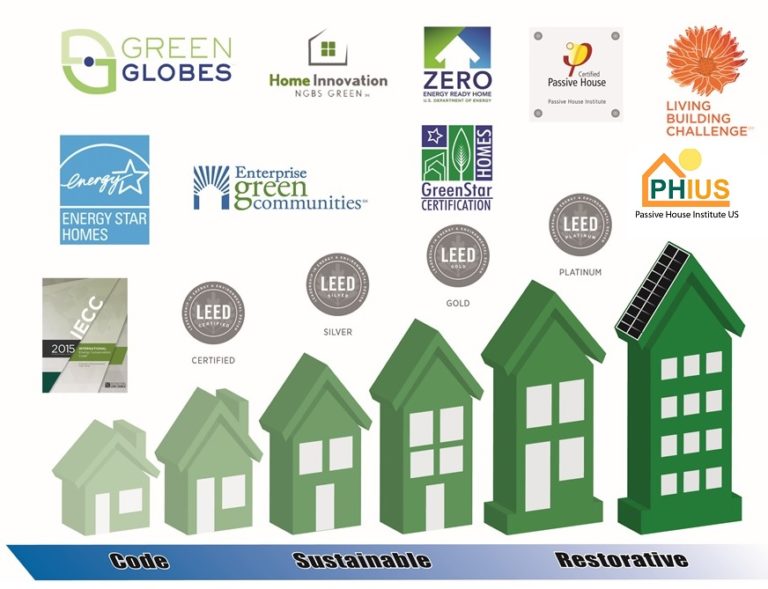How Does Architecture Promote Sustainable Building Certifications?

Green buildings, sustainability and energy efficiency are some buzzwords which have been gaining popularity among the general public. It’s not just a trend, but a movement towards sustainability and a better future for ourselves and the planet.
There are several certifications available that validate the sustainability and energy efficiency of a building. In this article, we’ll take a closer look at some of the most popular sustainable design certifications.
LEED Certification
Leadership in Energy and Environmental Design (LEED) is one of the most well-known sustainability certifications. This certification evaluates the building’s design, construction, and operation on the basis of factors such as energy efficiency, indoor air quality, and water conservation. LEED has four certification levels - Certified, Silver, Gold, and Platinum, which are based on the score earned according to the evaluation.
To achieve LEED certification, a building must adhere to specific criteria in all these categories. They include site selection, water and energy conservation, the use of sustainable building materials, and sustainable waste management, among others. It’s a comprehensive evaluation that covers all aspects of sustainability and encourages innovation in green building design.
Living Building Challenge Certification
The Living Building Challenge is an initiative by the International Living Future Institute which aims to promote regenerative design in buildings and communities. This certification evaluates a building’s design and construction on the basis of criteria that go beyond energy efficiency, including social equity, habitat protection, and biophilic design.
The Living Building Challenge has seven performance areas that every building must meet: Place, Water, Energy, Health + Happiness, Materials, Equity, and Beauty. A building must meet all the performance requirements to be certified as a Living Building.
Passive House Certification
Passive House Certification evaluates a building’s energy efficiency and comfort level, with an aim to reduce energy usage and lower greenhouse gas emissions. Passive house design principles include employing high levels of insulation, airtight construction, high-performance windows, and a mechanical ventilation system that recovers heat from exhaust air.
The certification is based on the building’s energy consumption, with strict criteria for heating and cooling demand, primary energy use, and air leakage.
BREEAM Certification
BREEAM (Building Research Establishment Environmental Assessment Methodology) is a sustainability certification that started in the United Kingdom and is now recognized around the world. Similar to LEED, BREEAM assesses a building’s environmental impact in categories such as energy consumption, water use, and waste reduction.
BREEAM also considers the building’s social and economic impact, including accessibility, health, and well-being, as well as potential investment returns. The certification has a variety of levels, from pass to outstanding, with each level having a minimum standard that must be achieved.
WELL Certification
WELL building certification is focused on promoting human health and well-being within a building. The certification involves an evaluation of features such as air and water quality, access to natural light and healthy food, and the level of physical activity that the building promotes.
WELL certification has ten core concepts, which include air, water, nourishment, light, movement, thermal comfort, sound, materials, mind, and community. A building must meet all the core concepts to be certified as “WELL”.
Energy Star Certification
The Energy Star program is run by the U.S. Environmental Protection Agency (EPA) and certifies a building’s energy efficiency. The certification focuses primarily on energy use and carbon emissions, and buildings must meet strict energy consumption guidelines to be awarded the Energy Star certification.
The certification requires building owners to track and report their energy usage, which is then compared to similar buildings in the same climate zone. If a building uses 25% less energy than others in the same category, it's eligible for Energy Star certification.
Green Globe Certification
The Green Globe certification is a global sustainability certification that evaluates a building’s environmental impact. It assesses a building’s management practices, energy and water usage, waste management, and transportation, among other factors.
Similar to other green building certifications, Green Globe encourages buildings to adopt environmentally friendly practices in all stages of the building’s life cycle. The certification has three award levels - bronze, silver, and gold - which are based on the percentage of sustainable practices implemented in the building.
The Best Sustainable Design Certifications for Your Building
Choosing the right certification for your building primarily depends on what you want to achieve through green building. Different certifications focus on different aspects of sustainability, such as energy efficiency, social equity, and indoor air quality.
Additionally, certifications such as LEED and BREEAM are more widely recognized globally, which may be important if you're looking to attract international clients or investors.
Consider these factors when choosing a green building certification:
- Goal – What do you want to achieve through green building?
- Cost – Different certifications have different associated costs. Consider the cost-benefit ratio.
- Geographic region – Some certifications, such as LEED and BREEAM, may be more recognized in some countries than others.
- Specific industry – Consider if a particular certification is more relevant to your industry than others.
In conclusion, sustainability and energy efficiency are key factors in building and construction. There are several certifications available that validate environmental standards and promote sustainable practices. Choose a certification that best aligns with your goals and budget, and make use of the many benefits that come with a sustainable building.
Frequently Asked Questions
What is a green building certification?
A green building certification is a recognition granted to a building indicating that it has achieved a certain level of environmental sustainability and energy efficiency. The certification evaluates factors such as energy efficiency, indoor air quality, and water conservation.
What are some popular green building certifications?
Some popular green building certifications include LEED, Passive House, Living Building Challenge, BREEAM, WELL, Energy Star, and Green Globe.
What are the general benefits of a green building certification?
The benefits of a green building certification include reduced energy costs, healthier indoor environment, reduced waste and water usage, and increased marketability. Additionally, green building certifications can lead to higher tenant retention and increased property value.
How do I choose the right green building certification?
Choosing the right certification primarily depends on what you want to achieve through green building. Different certifications focus on different aspects of sustainability, such as energy efficiency, social equity, and indoor air quality.
Additionally, consider factors such as cost, geographic region, and specific industry when choosing a green building certification.



Post a Comment for "How Does Architecture Promote Sustainable Building Certifications?"